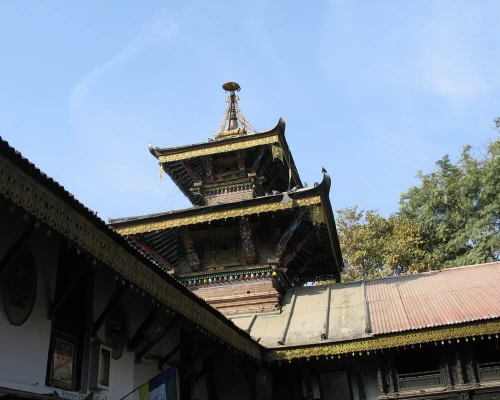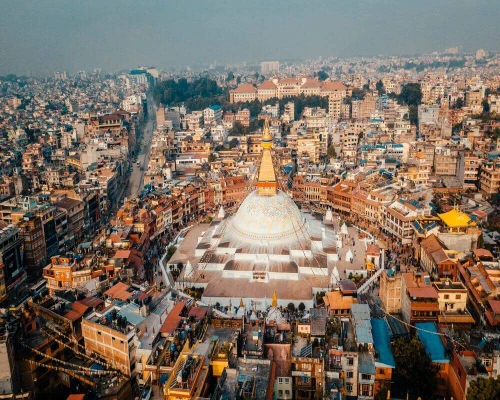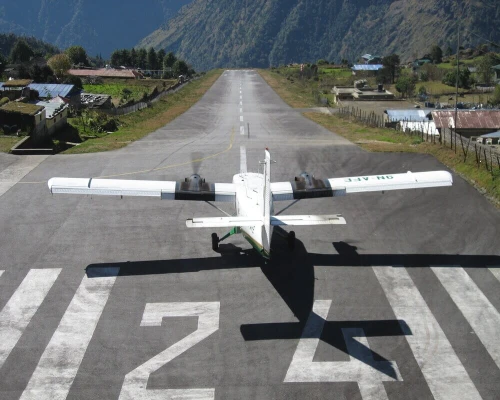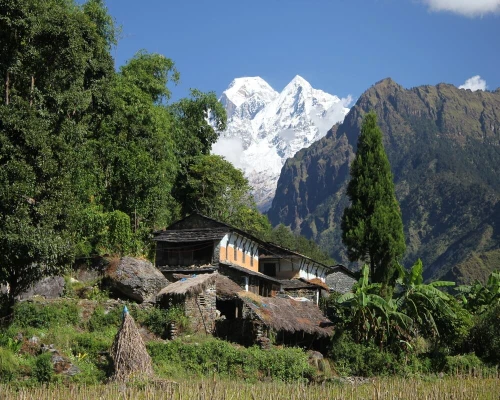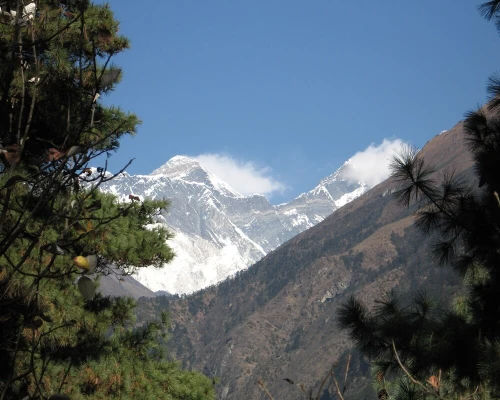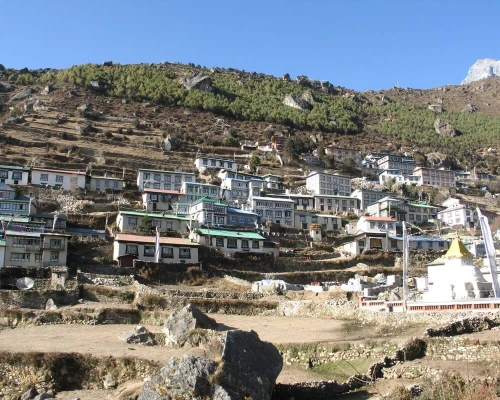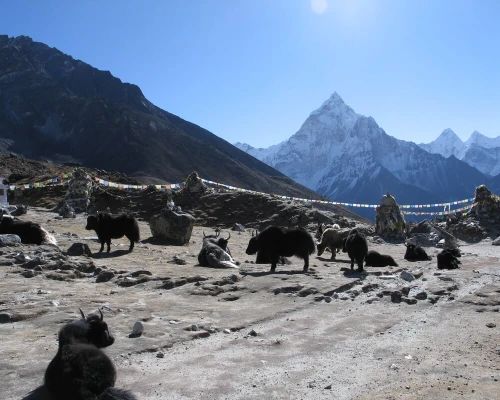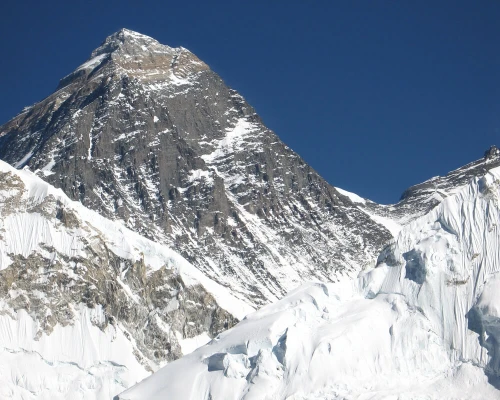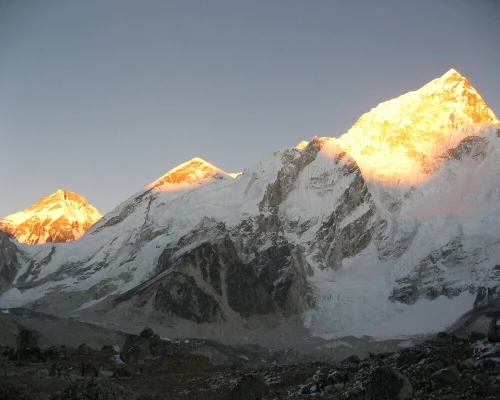Travel to the foot of Mount Everest in luxury on this Bespoke Everest Base Camp Trek. Amazing scenery, thrilling adventures, and lifelong memories await you on this journey. Traveling over unforgiving landscapes of snow-capped mountains and verdant valleys in the Everest region will teach you what it means to test your limitations. Imagine yourself in the presence of the Himalayas, home to the world's tallest peak, at their base. You'll get closer and closer to your destination, Everest Base Camp, with each stride you take. This custom trip will be one of a kind, letting you discover the trail's hidden treasures at your own speed. This incredible adventure is meant to test and motivate you, whether you're a seasoned hiker or just starting out.
The Bespoke Everest Base Camp Trek combines adventure and luxury to give you an unforgettable encounter with the Himalayas.
At a glance
- Luxury lodges with all the comforts of home and breathtaking mountain views are strategically placed along the trail.
- Trek through verdant rhododendron groves, quaint Sherpa settlements, and tranquil mountain scenery.
- Experience the finest cuisine while surrounded by stunning mountain scenery.
- Meet the welcoming Sherpa and get insight into their fascinating culture and history.
- Your safety, comfort, and pleasure in the trek will be taken care of by professional guides and support workers.
Overview of Bespoke Everest Base Camp Trek
Luxury travelers looking for something above the standard Everest Base Camp Trek will appreciate the Bespoke Everest Base Camp Trek cost. This trip has been planned to perfection, turning the classic hike into a luxurious adventure unlike any other in the Himalayas.
You may expect to stay in luxurious hotels in Kathmandu and upscale lodges in the trekking regions. The highlight of the journey is seeing the dawn over Everest from Kala Patthar, an event made all the more magical by your comfortable accommodations. The Luxury Everest Base Camp Trek goes above and beyond, providing a journey that is both extraordinary and sumptuous.
The Everest Base Camp Trek Preparation Process
Planning and preparation are essential for a safe and successful hike to Everest Base Camp. Before you go out on the path, there are a few things to keep in mind.
Obtaining the appropriate travel documentation, such as visas and permits, is a priority before beginning your journey. The TIMS (Trekkers' Information and Management System) Card and the Sagarmatha National Park Permit are required for entry into the park. In order to visit the Everest region, you will need one of these permits, which will verify your commitment to the area's conservation and preservation activities.
The next step is picking the perfect season to go to Everest Base Camp. The local environment and weather will have a major impact on how well your trip goes. Stable weather and great views of the mountains make spring (March to May) and fall (September to November) the most popular times to go trekking. The hike, however, may be done at any time of year, and each season has its own special rewards.
It is recommended that you undertake an intensive fitness program prior to starting the journey. Adequate preparation will guarantee that you are both physically and psychologically prepared for the demands of the Everest Base Camp trip. Some examples of this include running, weightlifting, and other endurance sports. As an added bonus, you can get used to the burden of your backpack by hiking with it loaded up before your actual trip.
Essential gear and equipment for the trek
The key to a successful and pleasant journey to Everest Base Camp is packing the correct clothing and equipment.
Purchase a sturdy pair of hiking boots with strong ankle support and enough cushioning for extended days on the trail. If you want to prevent blisters and pain, you should break them in before your hike. Dress in layers because of the wide range in temperature that may occur in a single day in the Everest area. Layers of clothes are useful because they enable you to adapt to different temperatures and humidity levels. A high-quality sleeping bag is required for a restful night's sleep at the trail's teahouses. Make sure it's lightweight and warm enough for chilly weather. Pick a backpack that can hold all your gear and is strong and light. A good starting point is 40–50 liters. The straps and the waist belt should be cushioned for ease of wear. The use of trekking poles is highly recommended since they help hikers maintain their balance and prevent falls, particularly on steep inclines and declines. They are great for relieving stress on the knees and enhancing stability.
Preparation for a Hike to Everest Base Camp Training and Health
It is essential for a successful and pleasurable Everest Base Camp trek to prepare your body for the physical demands of the journey.
Improve your cardiovascular health with workouts like jogging, cycling, swimming, or brisk walking. Exercise for at least 30 minutes, five days a week, at a moderate level. To increase your strength and stamina, you should do strength training activities regularly. Train your upper body, core, and legs equally, since you will be using all three extensively on the trail. To get your body ready for the long hours of hiking, do some endurance-building exercises like hiking or utilizing a stair climber machine. As your fitness level rises, you should start with shorter sessions and work up to longer ones. Practice trekking while carrying a heavy pack to get used to the weight and discomfort you'll feel on the Everest Base Camp hike. As your strength and stamina improve, you should increase the weight you're carrying. If you have the opportunity, you should include altitude training in your workout routine. Hiking at higher elevations or utilizing technologies that simulate altitude are two options for achieving this. The risk of altitude sickness may be mitigated by altitude training, which helps the body adjust to the lower oxygen levels seen at higher altitudes.
The Best of the Everest Base Camp Hike
The journey to Everest Base Camp is an incredible opportunity to see and do incredible things.
Namche Bazaar is a bustling town in the center of the Khumbu area and is often referred to as "the gateway to Everest." Visit the Sherpa Museum and the local markets to learn more about the fascinating history and customs of the Sherpa people. Tengboche Monastery is one of the most important monasteries in the Everest area, and it can be found at an altitude of 3,867 meters. Take in the breathtaking vistas, see the monks at prayer, and marvel at the complex architecture. Kala Patthar, at an altitude of 5,643 meters, is the best vantage point in the world for seeing Everest and the other peaks of the Himalayas. Experience the magic of waking up to the sun rising above towering mountains and capturing the scene in images. Everest Base Camp, at an altitude of 5,364 meters, is the journey's final goal. When you make it to base camp, you may finally stand in the shadow of Mount Everest, the tallest mountain on the planet. You will have several chances to meet and talk to Sherpas on this journey. Experience Sherpa culture firsthand by learning about and eating traditional Sherpa fare and developing a profound respect for their tenacity and determination.
Encounters with other cultures on the trail
The Everest Base Camp hike is not only a chance to see stunning scenery but also to learn about the fascinating culture and history of the Sherpa people.
As you go through the area on your journey, you'll come across a number of quaint and interesting Sherpa communities. Visit these rural areas to learn about the culture and customs of the residents and experience rural life for yourself. If your journey happens to fall on the same day as a traditional Sherpa celebration, count your blessings. Experience the rich tradition of the Sherpas by taking in their vivid festivities, colorful clothes, and exciting dances. There are several Buddhist monasteries in the Everest area, each providing a serene retreat from the surrounding peaks. Take in the spiritual atmosphere of these monasteries by visiting and seeing the monks perform their daily rituals. Treat your taste buds to the delectable tastes of Sherpa cuisine, a fusion of Tibetan and Nepalese cooking styles. Sherpa cuisine will satisfy your hunger and your taste buds with its substantial soups, stews, momos (dumplings), and butter tea.
Trekking to Everest Base Camp Obstacles & Difficulties
The journey to Everest Base Camp is a psychologically and physically taxing ordeal that calls for fortitude, resiliency, and planning.
One of the major difficulties of the journey is the high altitude. The air grows thinner, and the oxygen content lowers as altitude increases. The result might be acute mountain sickness (AMS), high altitude pulmonary edema (HAPE), or high altitude cerebral edema (HACE). Altitude sickness may be avoided with appropriate acclimatization and awareness of the warning signs. The topography of the Everest Base Camp hike includes steep inclines and declines, rocky pathways, and limited tracks. Physically hard and requiring cautious navigation are the suspension bridges, freezing portions, and moraines you'll face. Temperatures and precipitation levels in the Everest area are prone to dramatic swings for no apparent reason. During the winter months, it is particularly important to have a plan B in case the weather turns bad. The climb to Everest Base Camp takes a lot of time and effort, with many days consisting of 6–8 hours of walking. This calls for physical and mental toughness, particularly on the most difficult parts of the course.
Precautions and safety measures
During the hike to Everest Base Camp, your safety should be your first priority.
If you want to make it back alive, hiring a professional trekking service is a must. They will provide you with experienced guides and porters so that you can relax and enjoy the ride. It's good for your health and prevents altitude sickness. Get lots of water and stay away from alcohol and caffeine. Your guide is a seasoned expert with in-depth familiarity with the area. Pay attention to what they say, do what they say, and let them know if you have any questions or concerns. You should always have a well-stocked first aid box on you with necessary drugs, bandages, blister treatment, and any personal prescriptions you may need in the event of an emergency. The Everest area has a delicate ecology; therefore, it's important to leave as little of a footprint as possible. Leave no trace of your visit, recycle, and be respectful of local customs and laws.
Why Nepal Nomad with a bespoke trip?
The best way to make sure that a tough trip like the one to Everest Base Camp fits in with your interests and luxury is to go with a Nepal Nomad-customized experience. If you want to make the most of your time in the Himalayas, a customized trek is the way to go since it enables you to go at your own speed and choose your own schedule and add-ons.
Having access to knowledgeable guides who are well-versed in the area is another perk of a custom journey. These tour guides will show you the route and tell you interesting facts about the area's history, geography, and culture. Along the way, they will serve as guides, counselors, and friends, elevating the quality of the whole experience.
Your place to stay the night and refuel after a day of hiking will be an opulent resort. Your comfort and convenience will never be compromised in order to have a once-in-a-lifetime adventure where five-star comfort and the excitement of discovery blend perfectly.




